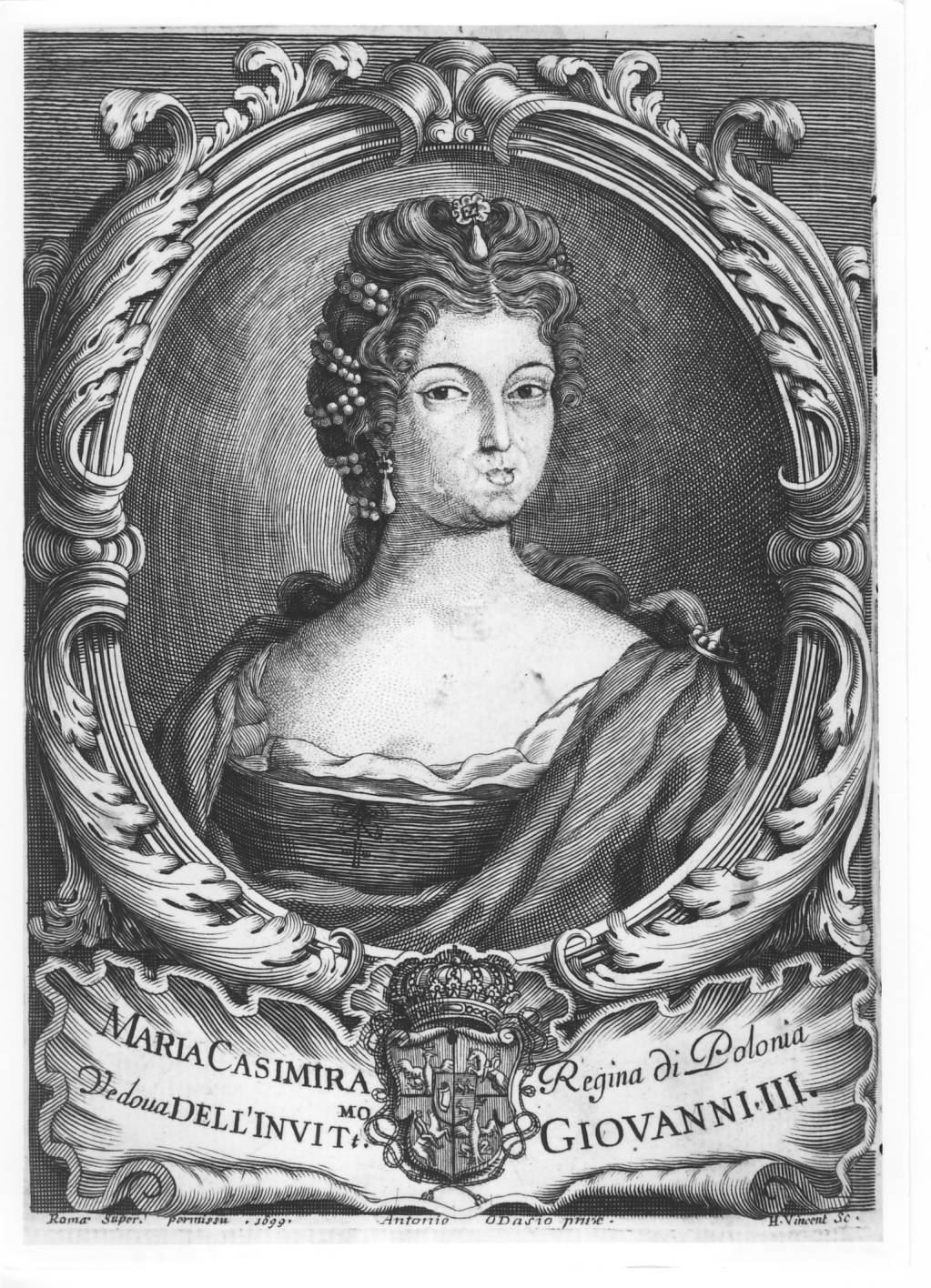
Extant correspondence of Marie Casimire d’Arquien, from 1658 wife of Entailer Jan Zamoyski, makes frequent references to her health, or more accurately to her heath problems. Already prior to her marriage she suffered from teeth aches, which led to swelling and acute migraines. Since contemporary dentistry knew no better remedy than extraction of a bad tooth, it seems justifiable to assume that already in her youth Miss d’Arquien had a rather incomplete set of teeth. This however was such a common feature that it would surprise absolutely no-one.
Serious health problems appeared after she was married to Entailer Zamoyski who infected his young spouse with syphilis. The consequences were soon to be seen in their offspring, either inept or dead in their infancy. Marie Casimire found her many confinements very tough and death of her children made her deeply depressed. She underwent treatment in the French city of Pau, taking the local waters, but instead of improvement she was faced with deterioration of her condition. On 10 November 1662 she wrote to Jan Sobieski from Paris: “For nearly three weeks I have been incapacitated and bedridden. I have had shivers and still have a high fever (…). Last night (…) I did not sleep a wink and felt as though fire burning within me from the stomach up to the throat (…), such was the effect of the water I drank; after I was administered syrup, I vomited rotten flesh. It was believed that an ulcer ruptured spontaneously”. Having returned to Poland, Zamoyska began losing weight (“everyone admits that I am now half my previous self”) and the fever did not subside. In 1669 Marie was already married to Jan Sobieski and expecting a baby when she contracted chickenpox, luckily with no side effects for either herself or the baby. The subsequent curative voyage to France took place in 1671, but five years later Marie developed a serious condition of the digestive system, so painful and long-lasting that she was certain she would soon die (a probable cause of the digestive problem was a poor condition of her teeth). Surprisingly enough, Sobieska’s health suddenly improved. Apart from migraines and frequent colds, she remained in good health until 1709 when she contracted measles. As she was not treated properly, Marie suffered from recurring “chronic and cruel” ailments, which prompted her to draw up a will on 20 April 1713. She died suddenly on 30 January 1716 in the evening in the Blois castle in biting cold and frosty weather, unusual in France. Let us add that considering her times the queen lived a long life (she died at the age of 75). In its course she managed to go safely through 17 deliveries and miscarriages. This fact alone proves that despite her congenital feeble health, Marie after all had a strong constitution and also, in view of the contemporary hygiene, a great deal of luck.
Contemporary painted and printed iconography of Queen Marie naturally avoided even the slightest mention of her many health problems, the more so that the honourable model herself was always particular about her looks and consequently made clear demands from the artists. Such was the case with her last printed image made from life when Sobieska was around sixty (1699–1700). The portrait was created by printmaker Hubert Vincent and painter Antonio Odazzi. The said copperplate engraving decorated Fr Antonio Bassani’s printed work entitled Viaggio a Roma della S. R. M. di Maria Casimira, Regina di Polonia Vedova dell’Invitissimo Giovanni III..., published in Rome in 1700. The portrait fails to reveal any deficiencies, not to mention signs of illness. Quite the contrary, the model is a still young and marvellously beautiful woman with dark, almond-shaped eyes and wearing her beloved pearls. As if stopping the time, she required to look that way and her wish became the two artists’ command.
Hubert Vincent, based on a painting by Antonio Odazzi: Portrait of Queen Marie Casimire, copperplate engraving, publ. 1700.
We would like to inform that for the purpose of optimisation of content available on our website and its customisation according to your needs, we use information stored by means of cookies on the Users' end devices. You can control cookies by means of your Internet browser settings. Further use of our website without change of the browser settings means that you accept the use of cookies. For more information on cookies used by us and to feel comfortable about this subject, please familiarise yourselves with our Privacy Policy.
✓ I understand